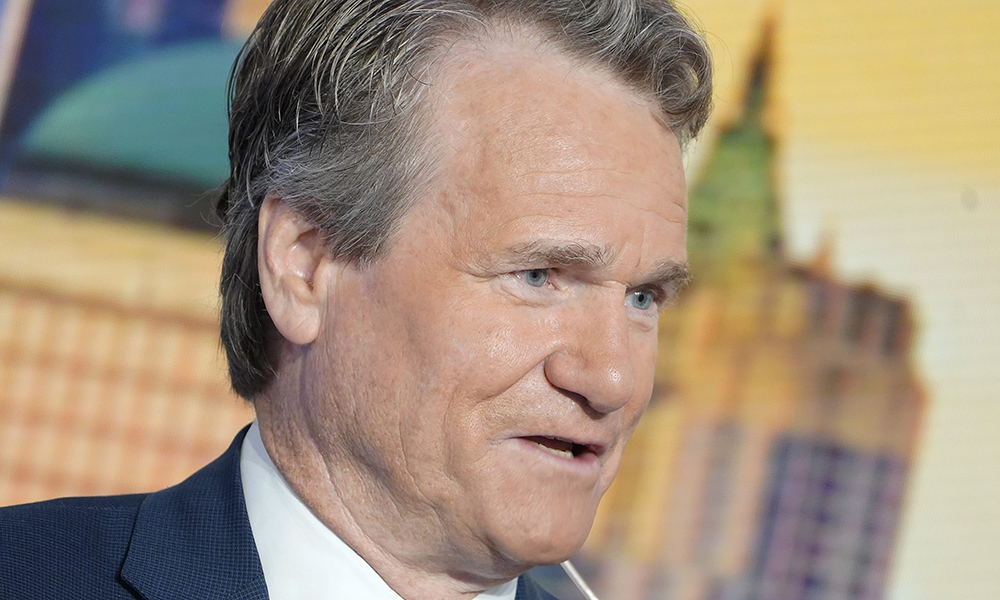
如今,华尔街充斥着这样一则消息:消费者终于失去了动力。
这也是美国银行自3月份以来一直预测的一种可能性,当时分析师警告称,美联储将把消费者逼入"痛苦的境地",以抑制通胀。
现在,据美国银行首席执行官布莱恩·莫伊尼汉称,这一时刻已经到来。
莫伊尼汉在接受美国全国广播公司财经频道(CNBC)《华尔街直播室》(Squawk on the Street)采访时表示,消费者的行为方式与美国2016年至2019年“经济低增长、低通胀”相一致。
在某一年,美国银行的客户花费了4万亿美元——无论是使用借记卡还是信用卡,开具支票,确认银行转账,还是取出现金进行消费。
莫伊尼汉表示,从2021年到2022年,这一支出增长了10%,但在2023年第一季度开始降至9%。
他补充说,现在这一增长数字已降至4.5%,这表明消费者要么胆战心惊,勒紧裤腰带,要么因储蓄账户金额减少(疫情期间,因财政刺激政策,储蓄金额激增)而无法维持他们的消费水平。
莫伊尼汉接着说:“9月和10月的情况也是如此。这一增长率……与我们在16年、17年、18年和19年的情况一致,那时经济低增长、低通胀。”
“消费者活动已经放缓了……放缓了一半,这意味着利率环境和所有正在发生的事情拖累了消费者活动。”
低收入家庭受到的冲击更大
莫伊尼汉继续支持花旗集团(Citigroup)首席执行官简·弗雷泽(Jane Fraser)的观点,弗雷泽表示,消费者支出开始出现"裂缝",尤其是低端消费者。
弗雷泽说,虽然花旗集团的数据显示消费者支出仍然"良好",而且是正数,但增长已经开始 "放缓",她向美国全国广播公司财经频道解释说,在9月份的数据中,"需求增长的放缓......显而易见"。
低端消费者的储蓄下降了,弗雷泽补充说:“目前他们的储蓄非常低,我认为新冠肺炎疫情期间的一些超额储蓄已经接近枯竭。”
莫伊尼汉说,美国银行也发现了类似的趋势。他说,中等收入家庭的账户余额较低,正在动用他们在疫情期间积累的“战争基金”。
同样,高收入家庭也将他们的资金从支票账户中移出,转而进行投资。
莫伊尼汉说:“你可以看到,账户余额有所减少,中等收入家庭的消费放缓。这意味着他们的支出超出了收入。因此,这意味着经济已经放缓,与经济低增长、低通胀相一致。”
美联储的计划奏效了吗?
如果所谓的YOLO(“人生只有一次”的缩写)消费者确实已经走到山穷水尽的地步,经济正逐步回到莫伊尼汉所说的低增长状态,那么美联储的计划真的奏效了吗?
美联储的首要任务是解决通货膨胀问题——通货膨胀确实有所下降。2023年9月,通胀率为3.7%,低于上年同期的8.3%。
经济学家似乎对这一努力大体上感到满意——尽管许多人警告说,未来将面临降低通胀最困难的部分。
美国财政部长珍妮特·耶伦(Janet Yellen)表示,通胀“状况极为乐观”,而沃顿商学院教授杰里米·西格尔(Jeremy Siegel)则认为,11月利率将保持稳定。
西格尔教授在其每周的"智慧树"(Wisdom Tree)评论中指出,经济仍存在大量不确定性——尤其是中东的紧张局势。
尽管如此,西格尔教授写道:“我们预计股市将在年底反弹,并在2024年迎来好年景。”(财富中文网)
译者:中慧言-王芳
如今,华尔街充斥着这样一则消息:消费者终于失去了动力。
这也是美国银行自3月份以来一直预测的一种可能性,当时分析师警告称,美联储将把消费者逼入"痛苦的境地",以抑制通胀。
现在,据美国银行首席执行官布莱恩·莫伊尼汉称,这一时刻已经到来。
莫伊尼汉在接受美国全国广播公司财经频道(CNBC)《华尔街直播室》(Squawk on the Street)采访时表示,消费者的行为方式与美国2016年至2019年“经济低增长、低通胀”相一致。
在某一年,美国银行的客户花费了4万亿美元——无论是使用借记卡还是信用卡,开具支票,确认银行转账,还是取出现金进行消费。
莫伊尼汉表示,从2021年到2022年,这一支出增长了10%,但在2023年第一季度开始降至9%。
他补充说,现在这一增长数字已降至4.5%,这表明消费者要么胆战心惊,勒紧裤腰带,要么因储蓄账户金额减少(疫情期间,因财政刺激政策,储蓄金额激增)而无法维持他们的消费水平。
莫伊尼汉接着说:“9月和10月的情况也是如此。这一增长率……与我们在16年、17年、18年和19年的情况一致,那时经济低增长、低通胀。”
“消费者活动已经放缓了……放缓了一半,这意味着利率环境和所有正在发生的事情拖累了消费者活动。”
低收入家庭受到的冲击更大
莫伊尼汉继续支持花旗集团(Citigroup)首席执行官简·弗雷泽(Jane Fraser)的观点,弗雷泽表示,消费者支出开始出现"裂缝",尤其是低端消费者。
弗雷泽说,虽然花旗集团的数据显示消费者支出仍然"良好",而且是正数,但增长已经开始 "放缓",她向美国全国广播公司财经频道解释说,在9月份的数据中,"需求增长的放缓......显而易见"。
低端消费者的储蓄下降了,弗雷泽补充说:“目前他们的储蓄非常低,我认为新冠肺炎疫情期间的一些超额储蓄已经接近枯竭。”
莫伊尼汉说,美国银行也发现了类似的趋势。他说,中等收入家庭的账户余额较低,正在动用他们在疫情期间积累的“战争基金”。
同样,高收入家庭也将他们的资金从支票账户中移出,转而进行投资。
莫伊尼汉说:“你可以看到,账户余额有所减少,中等收入家庭的消费放缓。这意味着他们的支出超出了收入。因此,这意味着经济已经放缓,与经济低增长、低通胀相一致。”
美联储的计划奏效了吗?
如果所谓的YOLO(“人生只有一次”的缩写)消费者确实已经走到山穷水尽的地步,经济正逐步回到莫伊尼汉所说的低增长状态,那么美联储的计划真的奏效了吗?
美联储的首要任务是解决通货膨胀问题——通货膨胀确实有所下降。2023年9月,通胀率为3.7%,低于上年同期的8.3%。
经济学家似乎对这一努力大体上感到满意——尽管许多人警告说,未来将面临降低通胀最困难的部分。
美国财政部长珍妮特·耶伦(Janet Yellen)表示,通胀“状况极为乐观”,而沃顿商学院教授杰里米·西格尔(Jeremy Siegel)则认为,11月利率将保持稳定。
西格尔教授在其每周的"智慧树"(Wisdom Tree)评论中指出,经济仍存在大量不确定性——尤其是中东的紧张局势。
尽管如此,西格尔教授写道:“我们预计股市将在年底反弹,并在2024年迎来好年景。”(财富中文网)
译者:中慧言-王芳
It’s a message now echoing in every corner of Wall Street: Consumers have finally run out of steam.
It’s also an eventuality Bank of America has predicted since March, when analysts warned that the Fed would push consumers to the “point of pain” in order to tame inflation.
And now, according to Bank of America’s CEO, Brian Moynihan, that time has come.
Speaking to CNBC’s Squawk on the Street, Moynihan said the way consumers are acting is consistent with a “low growth, low inflation economy,” which the U.S. saw from 2016 to 2019.
In a given year, Bank of America customers spend $4 trillion dollars—be it using a debit or credit card, writing a check, confirming a bank transfer, or taking cash out to spend.
From 2021 to 2022 that spend grew by 10%, Moynihan said, and began dropping to 9% in the first quarter of 2023.
Now that growth figure has dropped to 4.5%, he added, signaling consumers are either too nervous to spend the money they have, or have less in their pandemic-boosted savings accounts to sustain their spending levels.
“That is the same of September and October,” Moynihan continued. “That growth rate…is consistent to where we were in ’16, ’17, ’18, ’19, which was a low growth, low inflation economy.”
“Consumers’ activity has slowed down…It’s slowed by half, and that means the consumer is being slowed down by the interest rate environment and all the stuff going on.”
Lower-income homes are impacted more
Moynihan went on to support an observation made by Citigroup CEO Jane Fraser, who said “cracks” are beginning to show in consumer spending, particularly by lower-end consumers.
Fraser said that while Citi’s data shows consumer spending is still “good” and is in positive figures, the growth has begun to “come off,” explaining to CNBC that in September numbers, “the softening of the growth in demand, is…evident.”
Savings are down for lower-end consumers, Fraser added: “They’re very low at the moment, and I think some of the excess savings from the COVID years are close to depletion.”
Moynihan said that Bank of America has found similar trends. He said median-income households have lower account balances and are spending down their pandemic war chests.
Higher-income households have similarly moved their money out of checking accounts, but have instead moved their fortunes into investments.
“You’re seeing that deterioration of positive balances and consumers in those medium-income households down a little bit,” Moynihan said. “That means they’re spending some money in excess of what they bring in. So that means the economy has slowed down, consistent with a low growth, low inflation economy.”
Is the Fed’s plan working?
If the so-called YOLO (you only live once) spenders have indeed run dry and the economy is inching back, as Moynihan says, to low growth—then has the Fed’s plan really paid off?
The first priority of the Fed was to tackle inflation—which has indeed come down. In September 2023, inflation sat at 3.7%, down from 8.3% a year prior.
Economists seem largely satisfied by this effort—though many have warned the most difficult part of bringing inflation down lies ahead.
Treasury Secretary Janet Yellen remarked inflation is being “really well behaved,” while Wharton professor Jeremy Siegel believes rates will hold steady in November.
In his weekly Wisdom Tree commentary, professor Siegel observed there is still a great deal of economic uncertainty—not least tensions in the Middle East.
Despite this, professor Siegel wrote: “We’re poised for a year-end rally in equities and a good year for 2024.”






